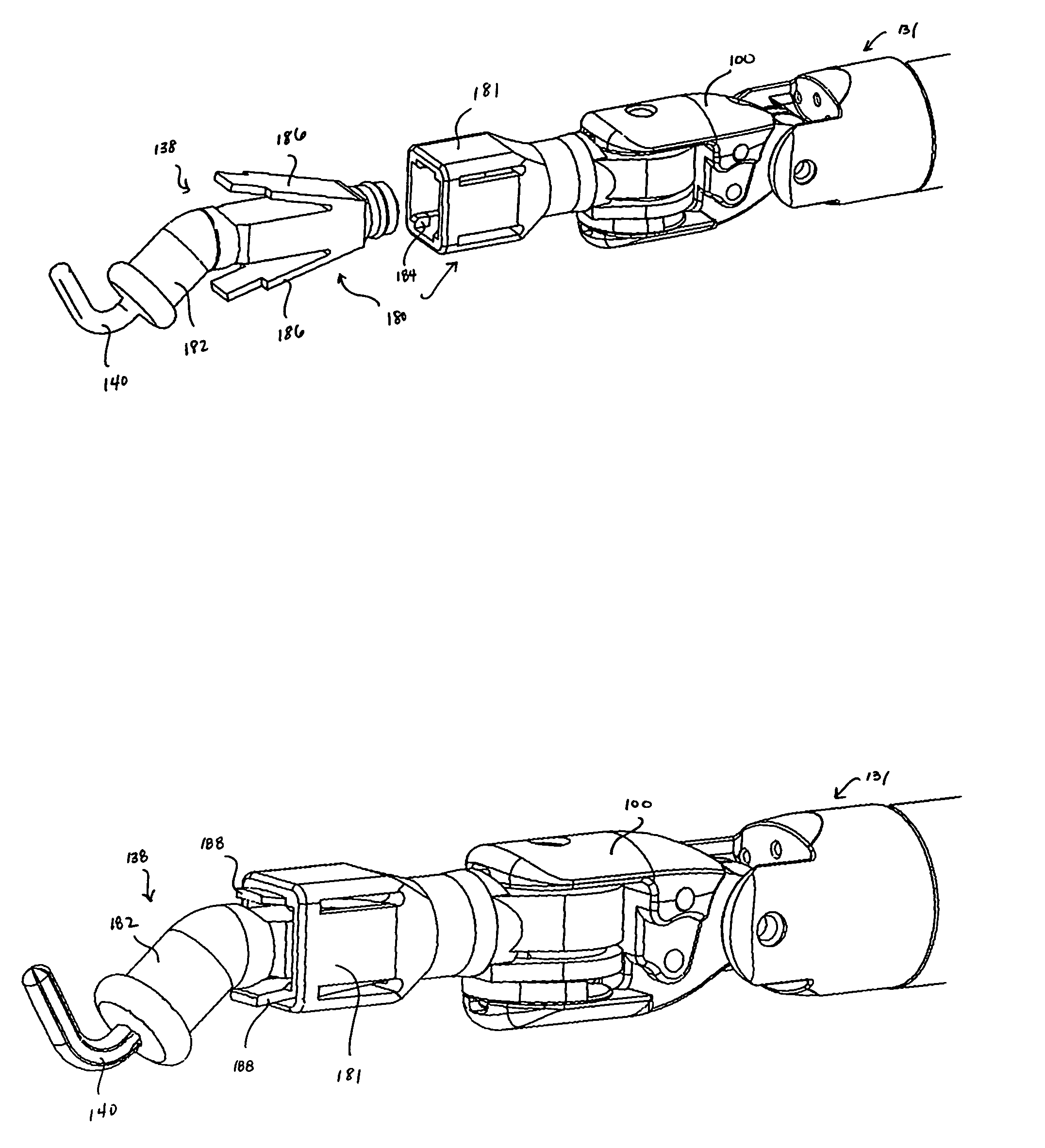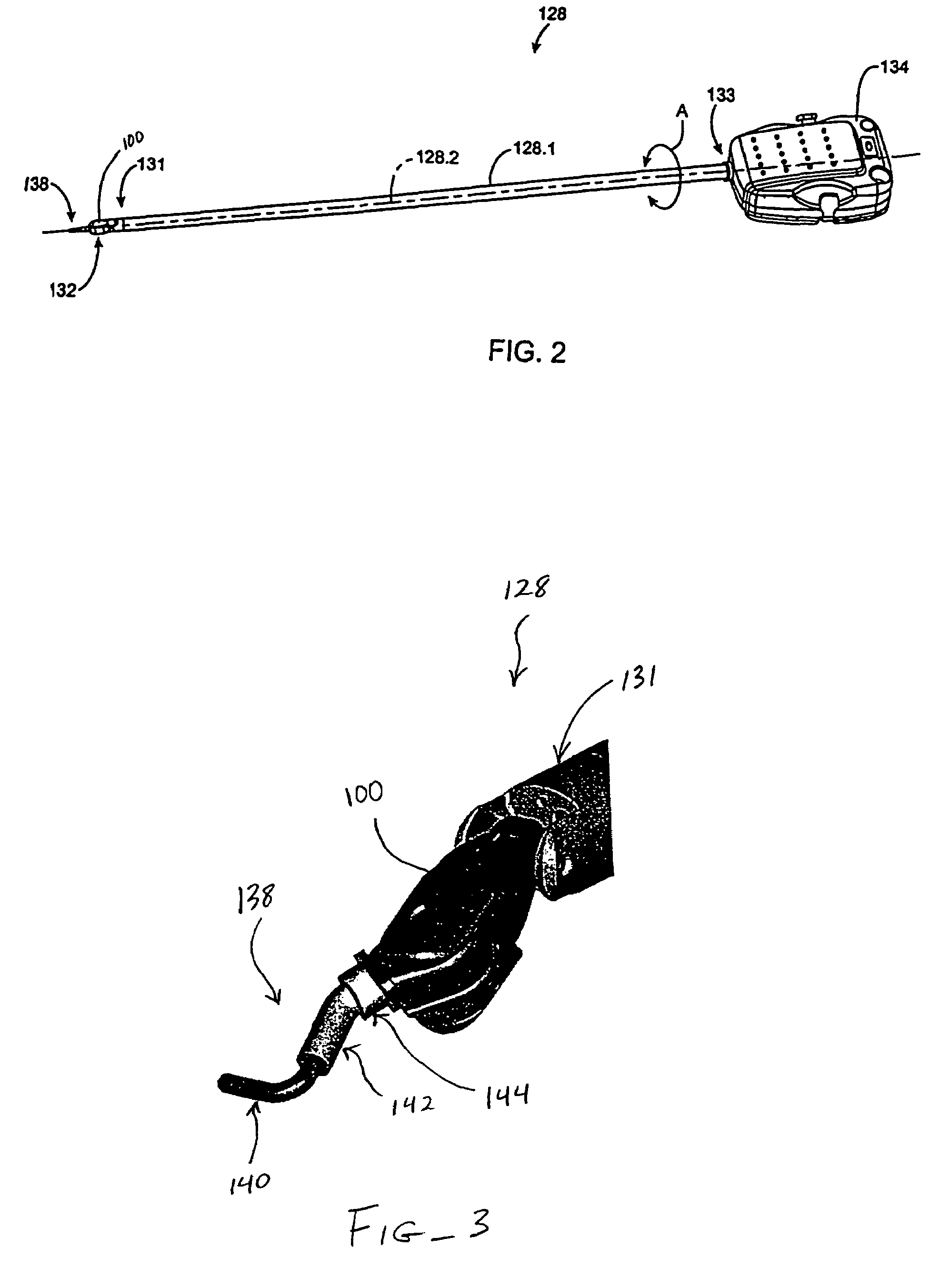Electro-surgical instrument with replaceable end-effectors and inhibited surface conduction
a technology of end-effectors and electronic instruments, which is applied in the field of surgical instruments and methods, can solve the problems of traditional minimally invasive surgical instruments, deny the surgeon the flexibility of tool placement found in open surgery, and minimally invasive techniques, so as to prevent unwanted patient burns
- Summary
- Abstract
- Description
- Claims
- Application Information
AI Technical Summary
Benefits of technology
Problems solved by technology
Method used
Image
Examples
Embodiment Construction
[0041]The present invention provides devices and methods for use in robotically controlled minimally invasive surgical operations. In particular, the present invention relates to improved end-effectors and electrosurgical instruments for use in robotic surgery. The end-effectors generally include means for inhibiting electrical current flow proximally from an active electrode toward the area of coupling between the end-effector and the rest of the electrosurgical instrument. The means for current flow inhibition often include one or more insulation materials, and in some embodiments an end-effector includes two layers of insulation material(s). In various embodiments, such end-effectors may be either removable coupleable with the electrosurgical instrument or permanently coupled with the instrument. Such end-effectors enhance methods of performing a minimally invasive surgical procedure while preventing unwanted and unintended burning of the patient, collateral tissue damage, meltin...
PUM
 Login to View More
Login to View More Abstract
Description
Claims
Application Information
 Login to View More
Login to View More - R&D
- Intellectual Property
- Life Sciences
- Materials
- Tech Scout
- Unparalleled Data Quality
- Higher Quality Content
- 60% Fewer Hallucinations
Browse by: Latest US Patents, China's latest patents, Technical Efficacy Thesaurus, Application Domain, Technology Topic, Popular Technical Reports.
© 2025 PatSnap. All rights reserved.Legal|Privacy policy|Modern Slavery Act Transparency Statement|Sitemap|About US| Contact US: help@patsnap.com



